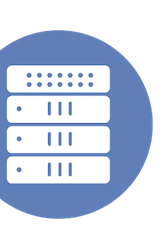Vuong Pham provides a comprehensive analysis of the latest advancements in HPE’s Next Generation ProLiant Compute solutions, focusing on technological enhancements and enterprise benefits. He offers insights into how these improvements can drive efficiency and innovation in data centers. Explore additional insights from our special Tech Field Day event with HPE and more coverage from Vuong Pham on LinkedIn Pulse.
What is a Field Day? Why Does it Matter?
In this LinkedIn Pulse article, Scott Shadley, who presented at AI Infrastructure Field Day last month, explores what Tech Field Day means to him. It’s wonderful to get the perspective of people like Scott who have been connected to Field Day for years but have not been part of the organization or delegate panel. Tech Field Day is for everyone!
Contextual Graph Databases at AIIFD2
Karen Lopez offers an insightful analysis on the advancements and functionalities of contextual graph databases presented at AI Infrastructure Field Day 2. Juniper Apstra uses a proprietary contextual graph database to define desired network outcomes and ensure network operation. The database, queried with customized Gremlin and Cypher, supports analysis of data over time and moving locations.
Do You Need a SASE Solution?
Exploring the evolving landscape of secure access service edge (SASE), this LinkedIn update describes the necessity and advantages of adopting a SASE solution for businesses. It covers how SASE integrates networking and security services into a unified, cloud-delivered model to enhance performance and security. This post was a response by Carole Warner Reece to the Versa Networks presentation at Networking Field Day 37.
Google -Perspectives from AI Infrastructure Tech Field Day
Camberley Bates shares insights on Google’s role and impact in the AI infrastructure space as seen during the AI Infrastructure Tech Field Day. The article highlights how Google leverages its expertise to advance AI technologies and infrastructure, influencing various industry practices. For detailed coverage of AI Infrastructure Field Day 2, read more articles by Camberley Bates on LinkedIn Pulse.
AI Tools for the Network Infrastructure
Exploring AI tools can greatly enhance network infrastructure efficiency and performance. By integrating AI technologies, companies can optimize data flow, enhance security, and predict network failures before they happen. That’s the gist of this update from Carole Warner Reece following Selector’s presentation at Networking Field Day 37.
NFD37: Old Dogs, New Tricks, Patient Tutors
Scott Robohn initially dismissed quantum computing as too far from operational use. However, after a presentation by BT Group at NFD37, he realized that his lack of understanding was biasing his opinion. In this article following Networking Field Day, Scott discusses the topic in more detail.
From Data Centers to the Edge: HPE ProLiant’s Security Revolution for the AI Age
Jack Poller’s latest LinkedIn Pulse article discusses the significant advancements in security within HPE ProLiant servers, a critical development as operations move from data centers to edge locations in our AI-driven era. He details how the enhanced security features are designed to meet the increasing demands for reliable and robust protection against sophisticated cyber threats in edge computing environments. This LinkedIn Pulse article follow’s Jack’s participation in our special Tech Field Day event with HPE.
HPE ProLiant Gen12 and iLO 7: A 2025 Approach to Server Security and Manageability
Jeffrey Powers discusses the innovative features of HPE ProLiant Gen12 servers, emphasizing their enhanced security protocols and improved manageability through the integrated iLO 7 technology. By providing a forward-looking perspective, he highlights how these advancements align with the demands projected for enterprise infrastructure in 2025. This LinkedIn Pulse follows Jeffrey’s participation in our recent Tech Field Day exclusive event with HPE.
HPE and the Value of On-Prem: ProLiant Gen12 Servers
Guy Currier’s latest analysis focuses on Hewlett Packard Enterprise’s (HPE) commitment to on-prem solutions, specifically spotlighting the ProLiant Gen12 servers. He discusses the servers’ new features and how these enhancements align with current IT infrastructure demands. For more coverage of our recent Tech Field Day Exclusive event with HPE, watch the Tech Field Day website and social media channels!
Innovation with Microsoft Security Copilot and AI Agents
Karen Lopez’s latest piece focuses on the advancements in Microsoft Security Copilot and AI Agents, highlighting their role in enhancing cybersecurity measures through innovative AI integrations. She explores the implications and potential benefits these technologies offer to enterprise security environments, emphasizing their capability to streamline tasks and bolster defense mechanisms. This article was inspired by Microsoft’s presentation at our recent Tech Field Day Showcase.
Why Is AI Inferencing the Next Battleground for Enterprise Tech?
Following Kamiwaza’s presentation at AI Field Day, Jack Poller explored the significance of AI inferencing in enhancing enterprise technology, identifying it as a crucial competitive frontier. His analysis covers the accelerative technologies and innovative strategies that are transforming AI’s application in the business landscape. For further insights on AI Field Day 6, follow Jack Poller’s posts on LinkedIn Pulse.
Unlocking GPU Potential: How MemVerge Solves Enterprise AI Infrastructure Challenges
Jack Poller recently covered how MemVerge addresses significant hurdles in enterprise AI infrastructure by optimizing GPU performance, crucial for handling extensive workloads and AI applications. He highlights MemVerge’s innovative approach in enabling more efficient memory management, which in turn, enhances computing processes and speeds up AI project delivery times. For additional insights on AI Field Day 6, follow Jack Poller’s updates on LinkedIn Pulse.
3 Ways OBSERVABILITY is Evolving: How Selector AI is Changing the Game
In this LinkedIn Pulse article, Shala Denise explores three significant ways in which observability is advancing, particularly focusing on the transformative impact of Selector AI technology. She highlights how Selector AI refines data interpretation, enhances operational efficiency, and fosters proactive problem-solving strategies within IT systems. For more from Cloud Field Day 22, follow Shala’s coverage on GiftedLane.
3 Key Challenges in Cloud Networking: Visibility, Control, and the Future of NaaS
In this post by Shala Denise, three primary challenges facing cloud networking are highlighted: visibility, control, and the evolving landscape of Network as a Service (NaaS). Denise explores how these issues impact enterprise IT, noting that understanding and managing them is crucial for optimizing cloud network operations and ensuring robust security. This post was inspired by the Infoblox presentation at Cloud Field Day 22.
Measuring Success in the AI Revolution: The Critical Role of MLCommons
Jack Poller’s insightful analysis on LinkedIn focuses on the pivotal role of MLCommons in benchmarking tools and datasets during the surge of AI technologies. In his article, Poller explores how MLCommons is setting the standards for machine learning performance, thereby shaping the future of AI development and implementation across various industries. For further insights on AI Field Day 6 from Jack Poller, explore his coverage on LinkedIn Pulse.
Kamiwaza: Orchestrating Generative AI
Jim Czuprynski has recently shared insights on the strategic implementation of generative AI through Kamiwaza’s innovative orchestration capabilities, highlighting how this technology can transform enterprise IT strategies. He explores the powerful potential of AI to automate complex systems and drive significant advancements in operational efficiency and decision-making processes. For additional insights on AI Field Day 6, check out Jim Czuprynski’s posts on LinkedIn Pulse.
Short datacenter wrap up on Cisco Live 2025 EU
Matyáš Prokop provides a concise summary of the key highlights from Cisco Live 2025 EU, focusing on the latest advancements and trends in datacenter technology. His coverage offers insights into new strategies and solutions that are shaping the future of enterprise IT infrastructure. For more coverage by Matyáš Prokop following Tech Field Day at Cisco Live, watch his LinkedIn feed!
VMware: Let’s Take This AI Thing Private!
Jim Czuprynski discusses VMware’s strategic pivot towards private artificial intelligence solutions in his latest LinkedIn Pulse article. He explores how this move could redefine cloud computing boundaries and enhance data security and computation efficiency for their clients. For additional insights from AI Field Day 6, follow Jim Czuprynski’s coverage on LinkedIn Pulse.
MLCommons: Bench More AI Weight With Less Pain
Jim Czuprynski offers an insightful look at MLCommons in his latest article, highlighting its initiative to streamline the benchmarking of AI models to enhance performance optimization with minimal hassle. He explores how MLCommons is setting new standards for fair and efficient AI benchmarks that can significantly ease the burdens on developers. For additional insights on AI Field Day 6, see Jim Czuprynski’s coverage on LinkedIn Pulse.







